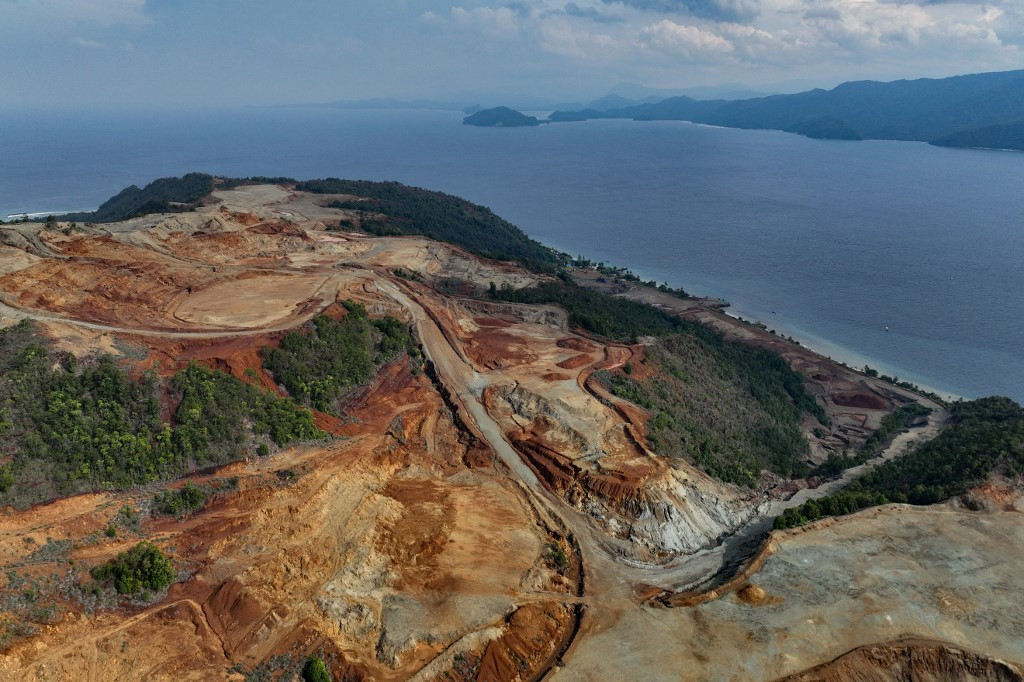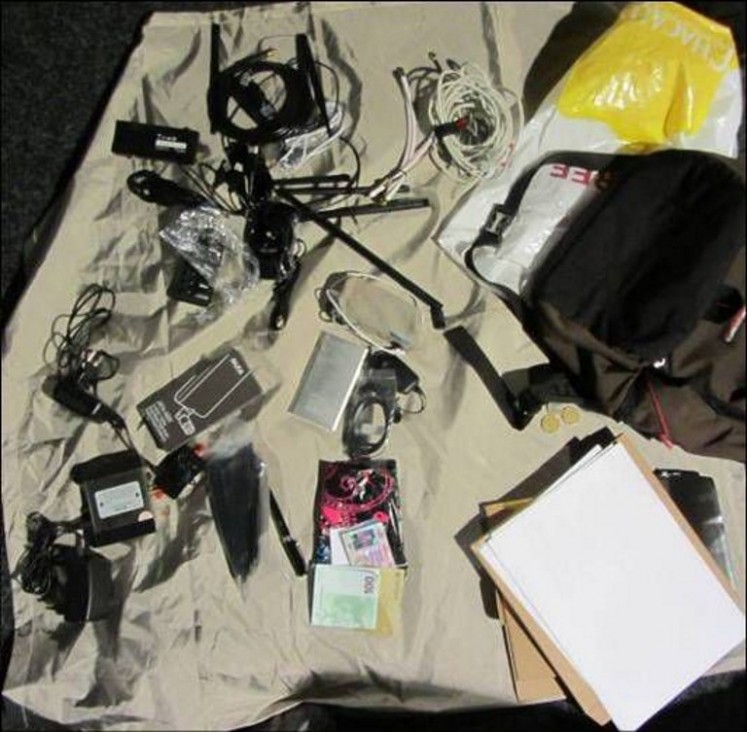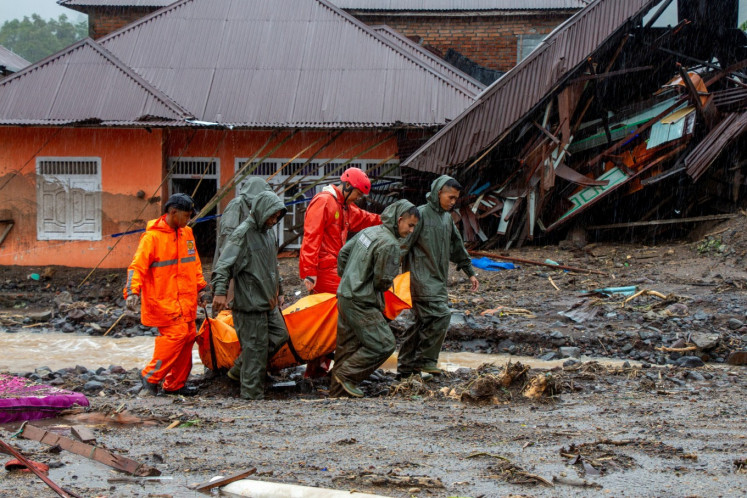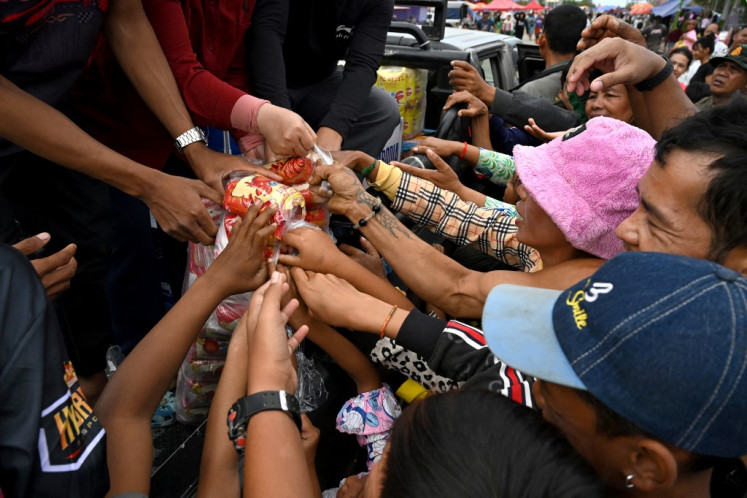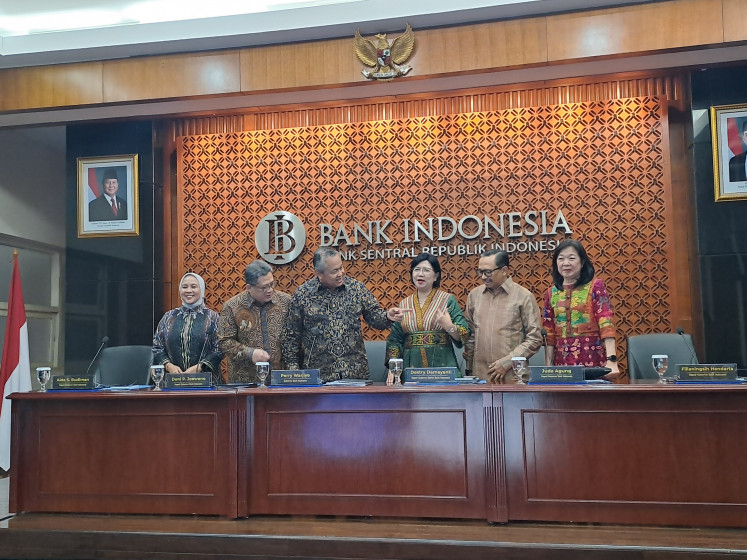Popular Reads
Top Results
Can't find what you're looking for?
View all search resultsPopular Reads
Top Results
Can't find what you're looking for?
View all search resultsResolving the misguided perceptions of deforestation for sustainable growth
The government needs to immediately address the issue of deforestation as a key problem affecting both the environmental and economic viability of investment in the palm oil industry.
Change text size
Gift Premium Articles
to Anyone
F
ood and renewable energy are among the top priority targets for investment through Danantara, the new sovereign wealth fund launched on Feb. 24 by President Prabowo Subianto. With US$900 billion in assets under its management, the development of palm oil fits well with the program due to the role this commodity plays as a major source of food and biofuel.
Logically, the huge amount of investment needed in natural resource-based industry development will require more space and land resources for expansion. Unfortunately, such land development plans may encounter classic social and environmental issues, particularly deforestation allegations which often hinder investment.
It is then necessary for the government and Danantara to work on the potential roadblocks and immediately address the deforestation issue as one of the key pertinent problems affecting both the environmental and economic viability of investment in the palm oil industry.
Indonesia, with a total land area of 188 million hectares (ha), is divided into two general spatial and land-use management categories, namely “forest area” and “non-forest area”, or “other land-use area”. Based on Forestry Ministry data, there are 120.3 million ha, or 64 percent of Indonesia's landmass, designated as forest area, while the remaining 36 percent is designated as development or other land-use area.
Judging from the landmass and land development opportunity, Danantara’s investment in the palm oil industry is not only highly economically viable and profitable, but also fits well with renewable energy, one of its priority investment targets. Even Malaysia, the world’s second largest palm oil producer after Indonesia, announced recently its ambition to become a major producer of renewable energy based on palm oil.
However, the government must resolve issues related to the different perceptions of forests and deforestation to avoid backlash from the global green movement.
In Indonesia, a forest is defined as land with a minimum area of 0.25 ha and at least 30 percent canopy cover. Also, the forest is defined as an ecosystem unit in the form of an expanse of land containing biological natural resources dominated by trees as an integral part of its natural environment. Forest area refers to an area that is designated by the government to be maintained as a permanent forest.
Globally, the most often used forest and deforestation definitions are those from the United Nations Food and Agriculture Organization (FAO). FAO defines a forest as “land spanning more than 0.5 ha with trees higher than 5 meters and a canopy cover of more than 10 percent, or trees able to reach these thresholds in situ”.
The FAO defines deforestation as “the conversion of forested areas to non-forest land use or the long-term reduction of tree canopy cover below the 10 percent threshold”, while in Indonesia, deforestation is defined as the loss of forest within certain classes of forest.
The FAO also introduced another politically correct term for the loss of forest cover to forest estate with the phrase “forest degradation”, which means “the conversion of naturally regenerating forests and primary forests into plantation forests and other wooded land”.
However, the global hype surrounding climate change and carbon emissions has misguided the global perception of deforestation from the old understanding. The term “forest degradation” is now considered obsolete and does not bode well with the global trend because forest degradation is now automatically equated to deforestation.
So when Forestry Minister Raja Juli Antoni said on Feb.17 that the government had identified 20 million ha of forest land, including degraded forests, that can be used for food and energy, his policy statement became widely controversial.
Currently, the conventional wisdom states, and global green movements have now embraced, a new credo that forests are sacred and must be conserved, protected and kept intact at all costs. Consequently, deforestation, which is merely defined as the loss of forest canopy and land cover, is considered as strictly prohibited, disregarding the objective of development and the existing legal status of the land.
Hence, it is recognized that there are unsettled discrepancies and misconceptions regarding the terminology of forest and deforestation that run counter to the primary tenets of sustainable development.
There are at least three alternative priority approaches to address the controversial definition of deforestation.
Firstly, the government must redefine the forest by aligning the legal status and ecological profile based on scientific considerations, particularly on ecological functions and environmental services. The conservation/protection of forest areas must be redesignated based on thorough High Conservation Value (HCV) and High Carbon Stock (HCS) assessments.
Further, forest land use must be determined based on HCV and HCS for protection and conservation only. The protected and conservation forest statuses will then include primary forests, HCV and HCS, which must be kept intact from any development. The production forest can be converted into plantation and food crop development area. The existing forest status areas, without low carbon stock and an absence of conservation value, can be legally converted into non-forest status.
Secondly, deforestation should be defined as any change or conversion of the designated forest protection and conservation area or area proved to be HCV and/or HCS into other purposes. Any changes to, or loss of, production forest areas should not be defined as deforestation without proper scientific assessment of HCV and HCS areas.
Therefore, the change or loss of forest cover in areas under production forest status or those shown to be non-HCV and non-HCS areas must not be labelled as deforestation.
Lastly, the government must introduce a new concept of “legal or justified deforestation” for specific areas designated for investments to answer to any allegations of deforestation on the three common claims of land cover, production forest and areas with low carbon stocks (non-HCS) and low conservation value (HCV). However, the concept should be based on a nationwide assessment of HCV, HCS and primary forest areas as the basis for redesignation of forest land use in Indonesia.
---
The writer is a sustainable palm oil analyst

